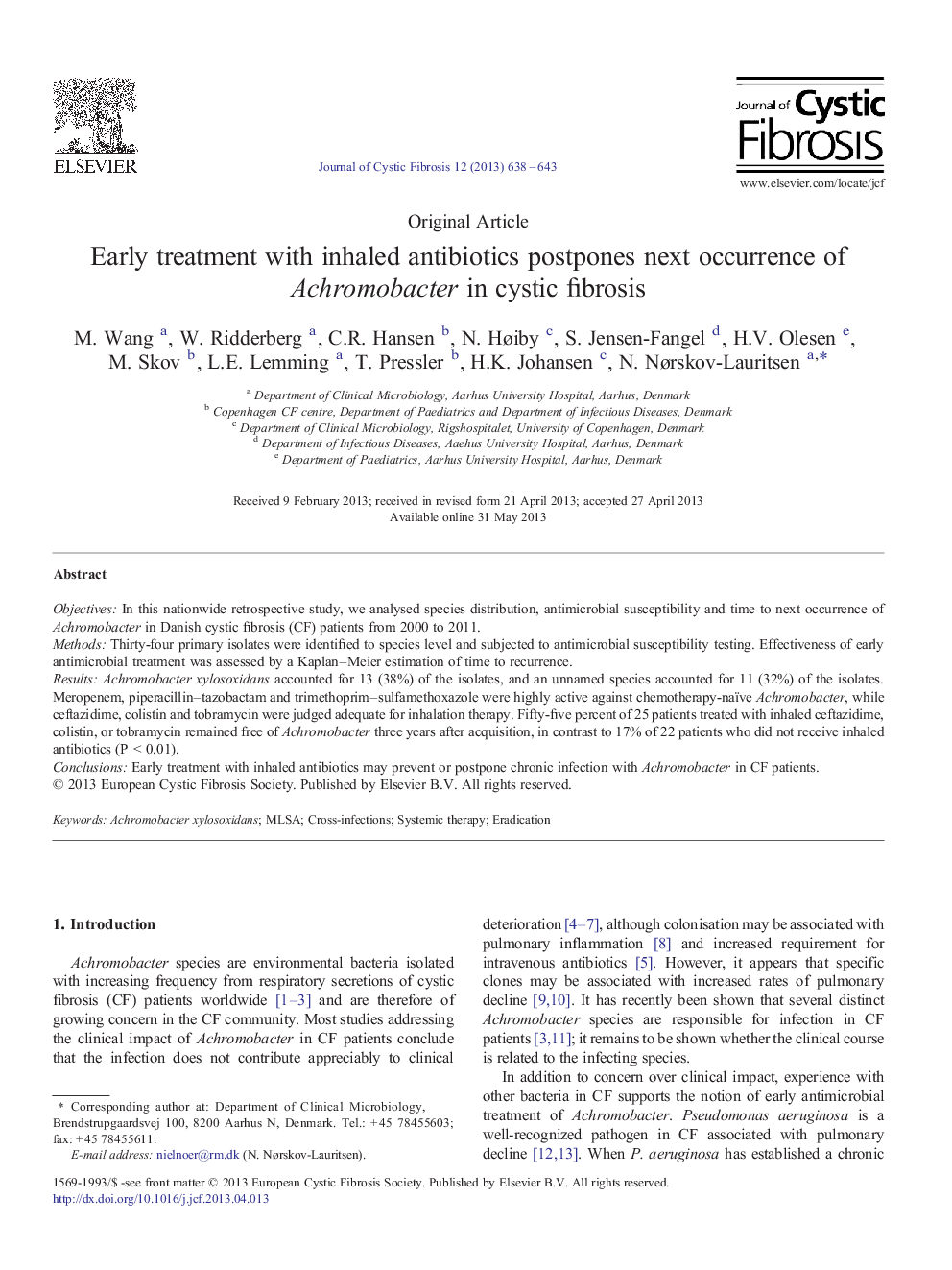| Article ID | Journal | Published Year | Pages | File Type |
|---|---|---|---|---|
| 6240731 | Journal of Cystic Fibrosis | 2013 | 6 Pages |
ObjectivesIn this nationwide retrospective study, we analysed species distribution, antimicrobial susceptibility and time to next occurrence of Achromobacter in Danish cystic fibrosis (CF) patients from 2000 to 2011.MethodsThirty-four primary isolates were identified to species level and subjected to antimicrobial susceptibility testing. Effectiveness of early antimicrobial treatment was assessed by a Kaplan-Meier estimation of time to recurrence.ResultsAchromobacter xylosoxidans accounted for 13 (38%) of the isolates, and an unnamed species accounted for 11 (32%) of the isolates. Meropenem, piperacillin-tazobactam and trimethoprim-sulfamethoxazole were highly active against chemotherapy-naïve Achromobacter, while ceftazidime, colistin and tobramycin were judged adequate for inhalation therapy. Fifty-five percent of 25 patients treated with inhaled ceftazidime, colistin, or tobramycin remained free of Achromobacter three years after acquisition, in contrast to 17% of 22 patients who did not receive inhaled antibiotics (PÂ <Â 0.01).ConclusionsEarly treatment with inhaled antibiotics may prevent or postpone chronic infection with Achromobacter in CF patients.
